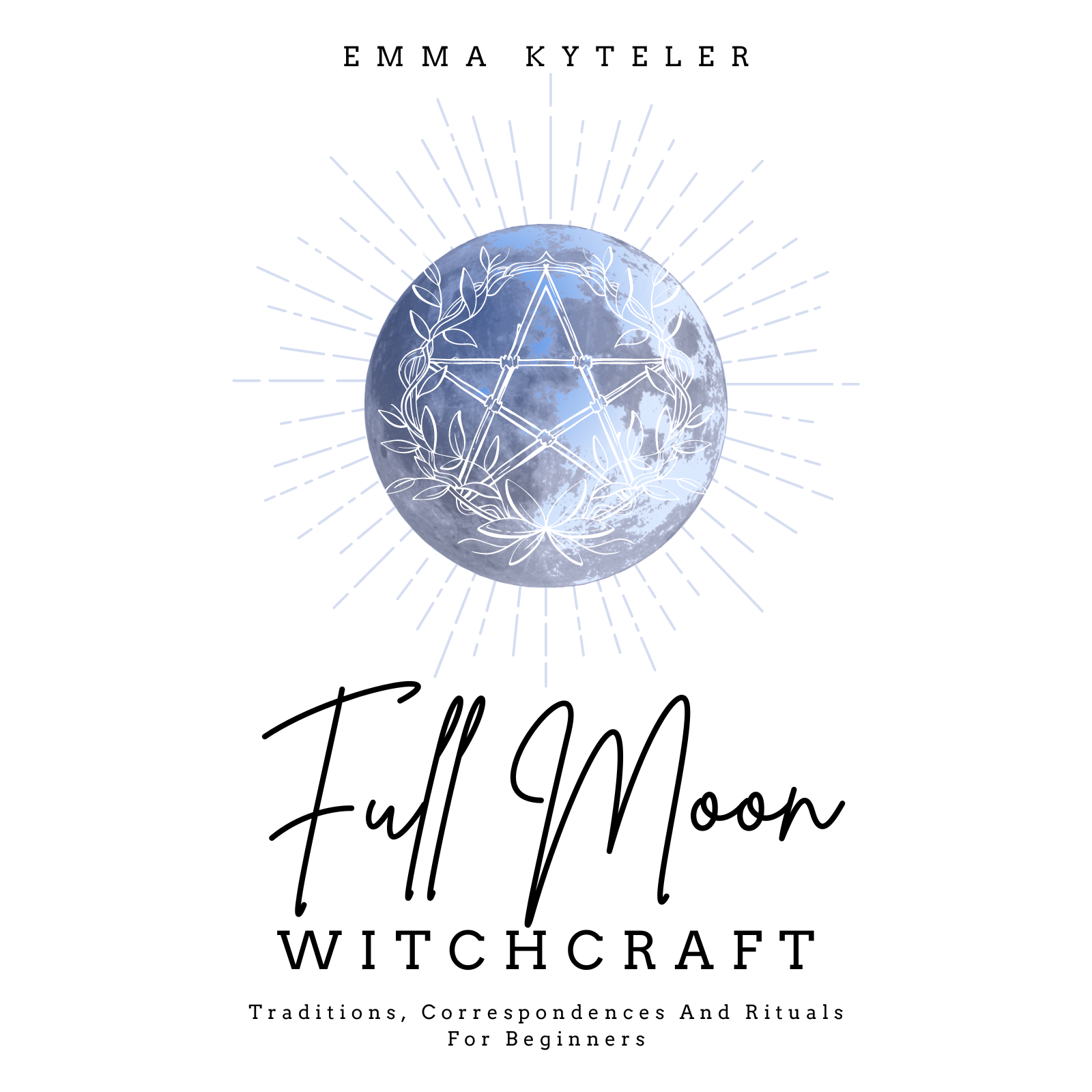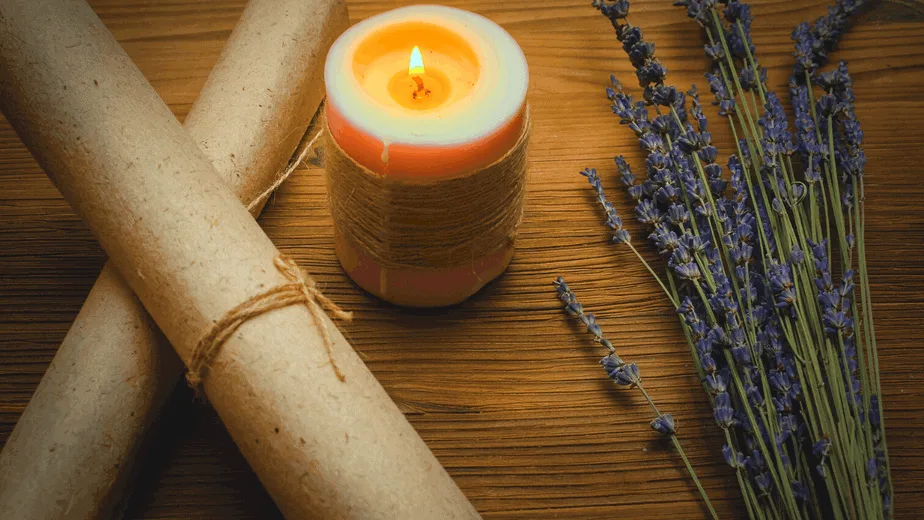Please note that posts on this site may contain affiliate links
Let’s take a look at building a pagan altar for Khonsu. Ancient Egypt had a few gods associated with the moon, but thanks to Moon Knight, the most popular one right now is Khonsu. Also known as Chonsu, Khensu, Khons, Chons, or Khonshu, he is the son of Amun and Mut.
Whether you’re a pop culture pagan trying to tap into the magic of Marvel’s Moon Knight, or a Kemetic pagan trying to get closer to a wonderful moon god, you may find it hard to gather tips for building a sacred space. This guide will help you create an altar that will be both beautiful and effective.

Who Is Khonsu in Egyptian Mythology?
Khonsu is a god with many faces. Known as a divine child, a fierce warrior, a cannibal, a moon god, and a healer, he was known by many epithets. Here are some of Khonsu’s epithets:
- Traveler
- embracer
- pathfinder
- defender
- the greatest god of the great gods
- wanderer
- the cannibal
- the contriver
- who-was-a-child
- Khonsu who slew the lords, who strangles them for the King, and extracts for him what is in their bodies
- Khonsu who lives on hearts
- the provider
- decider of the life span
- the raging one
- Khonsu-Determiner-of-Fate
- Reckoner-of-the-Lifetime
- Khonsu Who Exalts the Crowns
- the healer
- who lives inside Djeme
- the giver of oracles
- the expeller of spirits from the possessed
- the clerk of the divine cycle
- Angry one of the gods
- the merciful
- pendulum of heaven
- precise divider of months
- god of the new moon
- he who traverses the sky
- the navigator
- he who crosses the sky in a boat
- Who traverses Egypt in order to rule the two halves (of Egypt) in his great name
- lord of gladness
- Chons, heart of Re, who knows all things
- The Eagle of many-colored plumage
- the lord of the amulet
- lord of the gods
- the lion great in strength
- who appeases the gods
- who makes slaughter among the foes of the wadjet eye
- the second Re
- the kind and friendly
- the driver away of evil
- the brilliant dweller in Themes
- maker of his plans
- Smiter of wanderers
- the maker of means
- the hidden one
These epithets will give you an idea of what sort of god Khonsu is. He is multifaceted and complex.
Khonsu was depicted as the young boy of Amun and Mut in human form. He held the moon disk on his forehead to represent his power over it. He had a green face paint to symbolize his role of fertility. And he was wrapped in a white shroud from neck to toe.
He wore a symbol of power and domination over his neck to his chest. He wore his hair braided with a lock at the ends and was often shown holding the pillar of Djed or the Was scepter. Some depictions of Khonsu also showed him with the head of an eagle or falcon carrying the crescent moon disk. He was also at times depicted as a crocodile.
Records at the Temple of Karnak show Khonshu as the serpent who fertilizes the cosmic egg from which all of creation bursts forth. He also helps the creator god, Pthah, in creating time and the seasons. In this myth about the moon god, we see his relation to later developments in Orphic cosmology as well as Gnostic creation myths.
Khonsu was well-known throughout Egypt and beyond. People from far away came to beg him for healing. One typical example is a stele describing how an image of the god healed a princess. According to the stele, the princess received her health immediately as she looked at the god’s statue.
According to legend, when the moon god cured Ptolemy IV, he proclaimed himself “Beloved of Khonsu who protects his majesty and drives away evil spirits.” Khonsu became the patron deity of doctors and healers in Egypt.
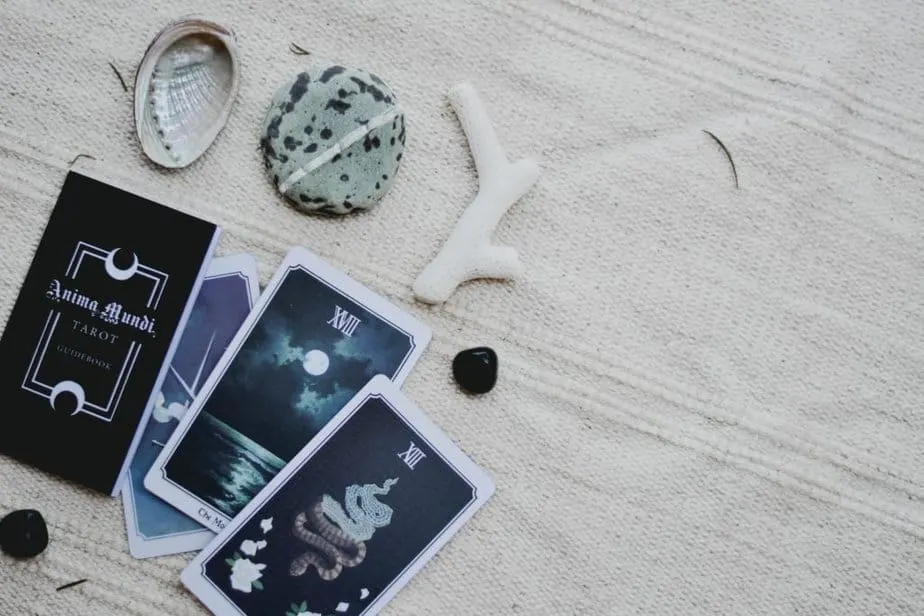
How Was Khonsu Worshipped?
Khonsu was very popular with the Ancient Egyptians. His cult was focused in Thebes, but there was an altar space devoted to him in many areas.
He was worshipped alongside Amun and Mut, his divine parents. Sacrifices were carried out for him in his temple spaces, and he had two holidays associated with him.
Was Khonsu Involved With Human Sacrifice?
Khonsu is a fierce deity known to be an eater of people. And it’s true that he may have been associated with human sacrifice. In the Coffin Texts, in spell 311, the operator that is ‘becoming’ Khonsu says that they have “bread consisting of men” and “offerings consisting of children.”
I’m not entirely sure what that means, but there is definitely a tie to at least metaphorical human sacrifice in the worship of Khonsu.
This isn’t unusual for ancient religions, of course. But there are some ancient practices that you just shouldn’t seek to replicate in the modern world.
If you want an example of a way to offer a human sacrifice without hurting anyone, consider this Tibetan practice:
In Tibet, under the influence of Buddhism, which prohibits all blood sacrifice, human sacrifice to the pre-Buddhist Bon deities was replaced by the offering of dough images or reduced to pantomime.
Source: (britannica.com)
You don’t have to hurt anyone or perform animal sacrifice to satisfy the gods to your best ability.
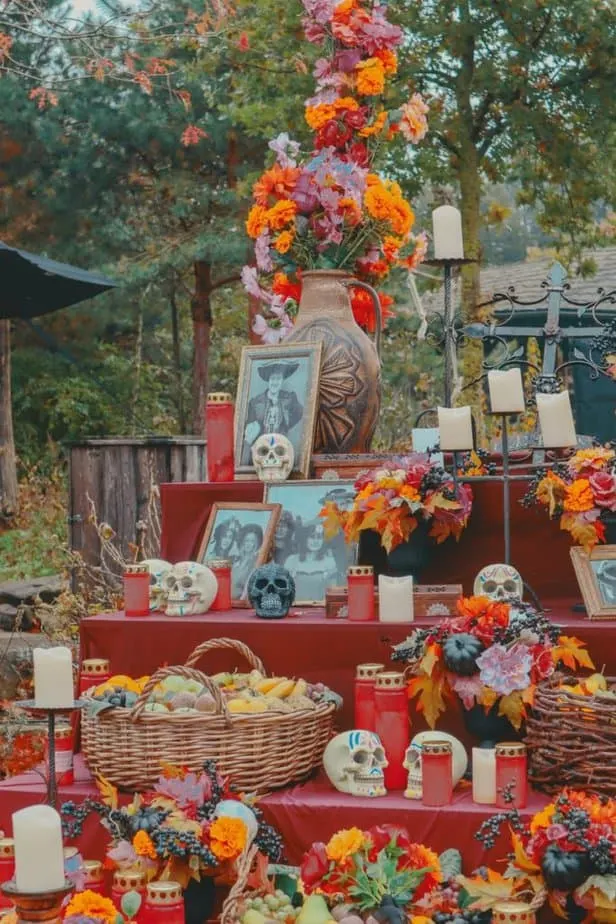
Offerings To Khonsu
In ancient Egyptian paganism, offerings represented life and order (ankh and ma’at). As life and order they were also linked to the gods.
Gods were not immortal in the absolute, but their life force needed replenishing. The circular flow of life through the cosmos prevented the universe from winding down. Offering was more than just gift giving; it was an act of co-creation.
Here is a list of acceptable offerings to the moon god Khonsu:
- baked goods
- bread
- figs
- beef
- dates
- grapes
- wild game
- water fowl or duck
- pigeons
- honey
- fruit and vegetables
- onions
- salt
- grains
- water
- Beer
- wine
- milk
- anything you have created
- moon meditation
- Pray to him at night, especially during the full-moon
- cultivate wisdom and your own healing powers
- protect the weak
- incense
- natron
- papyrus
- wood
- flowers
- jewelry / riches / gold
- clothing
- fabric
- oil based perfume
- Representation of ib heart (representing the soul)
- Representation of ma’at (representing truth, justice, balance)
- ankh
- Wedjat Eye, Eye of Horus, Eye of Ra
Most guides to what to offer the gods are based on unverified personal gnosis. This is fine, of course! That’s how I usually work. But the above list is a historical one that can be used to find the perfect offering to your god when you don’t know what they want.
When you’re just starting out and getting to know you’re god, it’s better to rely on what you know works based on what the ancients did.
Unlike some other traditions, in Kemetism it is expected that you will eat your food offerings to the gods and make good use of non-food offerings. They don’t want what you give them to stay rotting on their altar. The Netjeru don’t like wasted offerings!
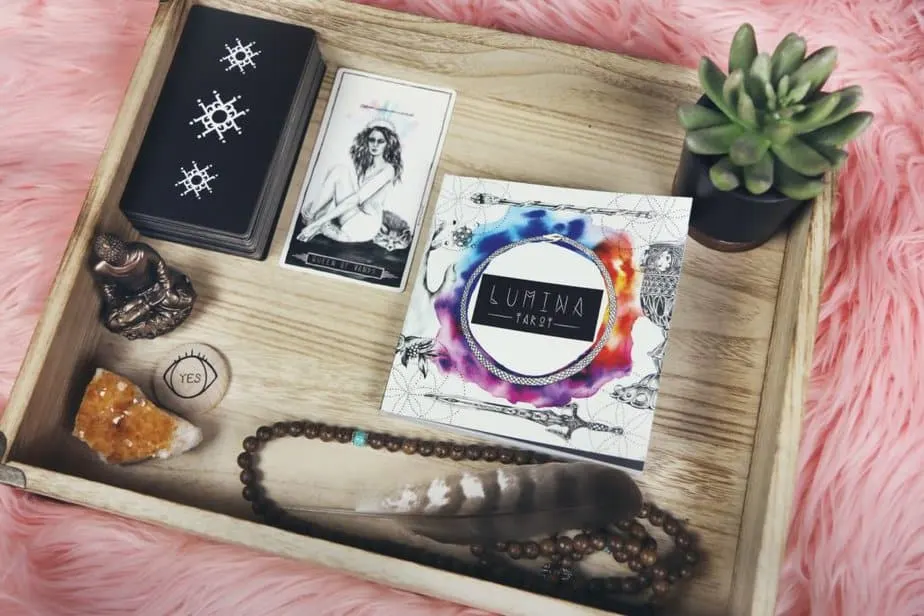
Decorating Your Altar To Moon God Khonsu
When choosing how to decorate your altar, spend time in meditation pondering the mysteries of Khonsu first. This will help you to feel his energy and work with it to create a beautiful sacred space. Pagan altars are more than just a formula of adding symbols and offerings. Personal altars need to work for YOU.
Here are some symbols associated with Khonsu:
- Lunar disc
- youth
- Full moon
- crescent moon
- Sidelock
- Menat
- Crook and Flail
- light in the night
- was-scepter
- the palm tree
And here are some animals associated with this great moon god:
Khonsu is also associated with the tarot card The Moon and The High Priestess. His direction is West, and his element is Air. His planet, obviously, is the moon.
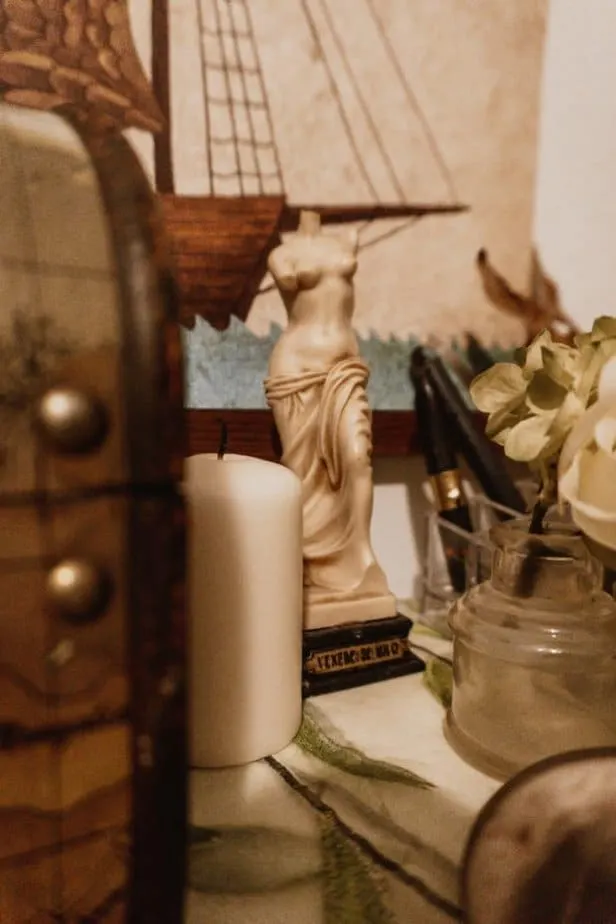
What To Do With Your Lunar Sacred Space
Placing an altar cloth and your chosen decor upon the altar, it’s time to consider how to use that sacred space. Khonsu is associated with many forms of magic. You should do these sort of spells at your sacred Khonsu altar:
- healing
- protection from wild animals
- time magic
- moon magic
- male virility
- fertility
- protection during nightly travel
- death and rebirth
- protection of children
- protection from other gods
- oracular decisions
- expelling disease demons
- rage magic
- calming spells
- dream spells
- peace spells
- memory spells
Where Should Your Altar Be Placed?
Whether you have a simple altar, a mobile altar, or something much more elaborate, you will probably want to place it somewhere that the moon can be seen. By a window is a good option.
A mobile altar can be taken from inside to outside depending on the weather. A mobile altar is a great way to take the gods where you need them.
Instead of a mobile altar you can also make an altar box. Your altar box is a great way to be discrete in your practice.
A basic altar can be a window ledge, a bedside table, or a shelf on a bookshelf. All that matters is that your altar be a place where you can take a few deep breaths and really connect with the gods.
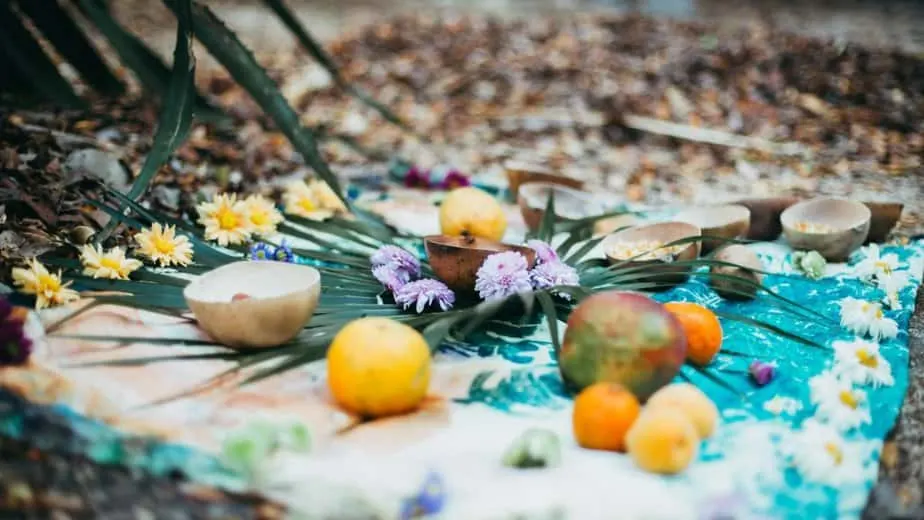
What Is A Pagan Altar?
An altar is a space dedicated to the worship of a certain deity, spirit, or idea. An altar is a place of meditation, reflection, or prayer. It is a sacred space where you can focus on yourself and your relationship with the divine.
Your altar is where you can connect with your inner self, and let go of any negativity that might exist within you. Often times, altars will contain candles, incense, flowers, crystals, statues, pictures, books, and other items that hold meaning for you.
You can create your own altar, or buy one at a store. If you choose to create your own altar, there are many different ways you can design it. Some people prefer to keep their altars simple and clean, while others enjoy creating elaborate works of art. There is no wrong way to design or decorate your altar. Simply follow your heart, and allow the altar to speak to you.
Your altar represents the elements, spirits, emotions, intentions, and even specific goddesses or god that you would like to focus on in your spiritual practices.
These can vary depending on what type of practice you follow. Commonly seen on our altars are small sculptures representing the Mother Goddess, stones and crystals, bone, snakeskin, and items that represent each element.
Some of us have multiple altars dedicated to different aspects of our spirituality. For example, one altar might be focused on love while another is focused on healing, and yet another is focused on wisdom.
An alter is a simple item that helps focus your witchcraft practice. You might use a small candle, a piece of wood, a rock, or even a picture of someone close to you. If you’re working with a group, you can create an altar with objects that help you remember what you’re trying to accomplish. Or you can simply keep bringing new items to the altar to remind yourself of why you’re there.
Candles. Flowers. Incense, toning bowls, bells, aromatic spices. Water. Living plants. Steamy cups of tea or water. Dry fruits or chocolate. These elements can add an extra dimension such like smell, sound, touch. They can help bring your mind into focus more quickly and deeper.
There are many different ways to use altars. Some people like to keep them simple while others prefer elaborate displays. You can use an altar for meditation, worship, reflection, contemplation, prayer, and even just decoration. The purpose doesn’t matter as long as you enjoy using it.
Take your moon magic to the next level with Full Moon Witchcraft. In this book, you'll learn how to work with the powerful energy of the full moon to create positive change in your life. From choosing the right moon phase for your spellwork to understanding how the full moon influences you based on your natal moon sign, you'll be equipped with all the information you need to work successfully with this potent lunar force.
You'll also find tips and tricks for working with full moon energy for love, money, healing, and even hexes and curses. So whether you're a novice witch looking to take your first steps into magical practice or an experienced practitioner looking to deepen your understanding of this vital component of witchcraft, Full Moon Witchcraft has everything you need!

